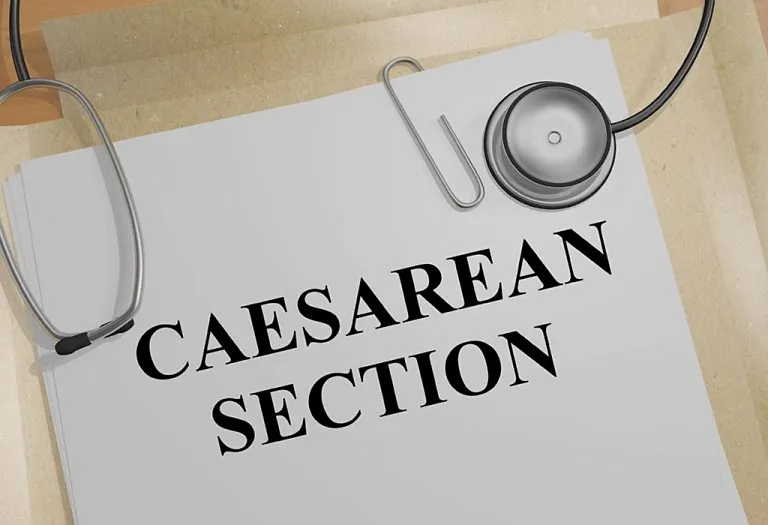Membrane or Cervical Sweep: Risks, Pros & Cons
As your delivery due date is nearing, your anxiousness and excitement are increasing. You can expect your labour pain anytime. Typically, after the completion of 40 weeks, pregnant women experience labour pains. But, in some cases, contractions are not experienced even after the due date. In such scenarios, a manual procedure is done to induce contractions. A membrane sweep is the first and the most basic procedure doctors, nurses, or midwives do to stimulate labour pains. What is membrane stripping, and how is it done? Most importantly, does it have any side effects? Let’s find answers to all your questions in this article.
What Is a Membrane Sweep?
A membrane sweep or cervical sweep is a manual process used to stimulate the cervix. The doctor or midwife will insert a gloved finger, feel the cervix of a full-term pregnant woman, and gently but firmly move the finger around. This sweeping of the thin membranes of the amniotic sac is also called stripping the membrane. Sweeping the membrane separates the sac from the cervix and helps in releasing prostaglandins (hormones which might induce labour pains). Membrane stripping is also referred to as the ‘stretch and sweep’ process because if sweeping is not required, stretching of the cervix is done to manually stimulate the cervix (1).
How Is It Done?
The pregnant woman is asked to lie down in a position wherein the feet are together, and the knees are on either side (the lithotomy position). When the woman is comfortable, the doctor inserts a finger (which is gloved) into the vagina. By feeling the cervix, the doctor gently sweeps inside the cervical region. As discussed earlier, this sweep and stretch process separates the amniotic sac from the cervix and aids in the release of the prostaglandin hormones. The release of these hormones induces pain and leads to labour and childbirth (2). The membrane stripping procedure is a basic and commonly used method because it does not include any medication.
Is It Painful?
Membrane sweeping is not painful, but it is definitely uncomfortable. The procedure lasts for only five to ten minutes and can become easier with relaxation techniques and breathing exercises. You may feel some cramping or discomfort afterwards (3). If you are not fully convinced about the procedure, you can choose other methods to induce labour pain.
Is Membrane Stripping Safe?
Studies indicate that membrane stripping does not have any major risks and is considered safe. According to a study published in the Journal of Clinical Gynecology & Obstetrics (4):
- There were no negative side effects due to membrane stripping.
- Women who have membrane stripping done are not likely to experience complications during labour.
Is Membrane Sweeping Effective?
Expert researchers find it difficult to conclude whether membrane sweeping is effective or not. Various studies have been conducted to analyse the effectiveness of membrane sweeping. One such review concluded that the effectiveness depends on the gestational period when the procedure is done and also whether the women have used other methods to induce labour (5).
For pregnant women who have overshot their due date, this procedure can be very effective. It was also found that women who have had the procedure done went on to experience labour pains and delivered soon (6). However, it is important to note that membrane sweeping might not be as effective as other methods or procedures where medications are used. So, membrane stripping can be considered to be an effective option in scenarios when there is no urgent medical reason to induce labour pains using medications.
When Is It Offered?
Extension of pregnancy might affect the health of the baby and the mother. After forty-two weeks, your placenta might not be in a good position to supply adequate oxygen and food to the baby, thus endangering or affecting the baby’s growth. A membrane sweep at 37, 38, 39, and 40 weeks is usually done on cases basis and urgency. So, your doctor might suggest a membrane stripping in the following cases:
- You have crossed the due date and still haven’t experienced labour pangs. Ideally, it would be after completing your 40th week in pregnancy.
- Typically, for first-time mothers, if the labour doesn’t start in the 41st week, a membrane sweep becomes necessary.
- For women who have already delivered earlier, doctors advise a membrane sweep if the labour pain doesn’t come up even after 42 weeks.
- There is an emergency, and the baby must be delivered soon.
When Should You Avoid It?
Doctors avoid doing a membrane sweeping in the following cases:
- If the pregnant woman is bleeding.
- If women have a B-strep infection, membrane stripping can worsen the existing situation.
- If the woman cannot go for a vaginal delivery due to a medical complication (2).
Membrane Sweep Risks
Membrane stripping has some risks, such as rupturing the amniotic sac, thereby exposing the baby to possible infections. You might also experience some cramping 24 hours after stripping, which can disturb your sleep before going into labour.
Pros of Membrane Sweep
Following are some of the advantages of membrane stripping:
- It is a natural procedure and does not involve any medicines.
- It reduces the chances of C-section by inducing labour.
- The procedure is quite simple and can be done by a midwife, too.
- Usually, there is not much intervention required after a membrane sweep procedure.
Cons of Membrane Sweep
Following are some of the disadvantages of membrane stripping:
- It is not always effective and might require sweeping a couple of times to induce labour.
- It should not be done if vaginal birth is not advised by the doctor.
- It is uncomfortable as the cervix might be located deep inside and may not be reachable.
- There are possibilities that the water bag might break during the procedure, thereby exposing the baby to infections.
What Happens After a Cervical Swab
A cervical sweep or cervical swab is not a pleasant experience and might be uncomfortable. The cervix has a lot of blood vessels, so you might feel sore or experience some bleeding after the procedure. In case of heavy bleeding, contact your doctor and ensure that you go to the hospital immediately.
Some Important Facts Associated With Membrane Sweep
Following are some important facts regarding membrane stripping:
1. Restlessness
Stripping of the membrane can cause restlessness in some women. It is advised that you take a lot of rest after membrane stripping as you might be anxious about being overdue.
2. Discomfort
Some discomfort can be felt after membrane stripping as the cervix is difficult to reach in full-term pregnancies. It could also be painful in some cases. You can do some basic breathing exercises to relax during the procedure. Some women experience mild spotting and irregular contractions after the procedure.
3. Going past your due date
It is quite unusual for women to go past 42 weeks of pregnancy. Normally, 41 weeks is the maximum time limit for normal delivery, but three in every 100 women go past 41 weeks. In this case, the doctor will try membrane stripping to induce labour naturally.
When to Call a Doctor
If you experience unbearable pain or heavy bleeding after the procedure of a membrane sweep, you must immediately call your doctor. Although bleeding and cramping after a membrane sweep for labour is expected, anything severe indicates a problem and must be diagnosed by a doctor immediately.
FAQs
1. Why is a membrane stripped?
If a pregnant woman’s cervix is partially dilated but the contractions haven’t started or if they did but stopped after a short while, it may delay the labour and potentially put the pregnancy at risk. A membrane sweep during pregnancy is done to start labour naturally and without medication. It is to be noted that doctors won’t perform a membrane sweep if the pregnant woman shows signs of needing a cesarean section.
2. In which pregnancy week do membrane sweeps happen?
The membrane sweep procedure is usually not done until 39 weeks or later in pregnancy. After 40 weeks, doctors may take note of the pregnancy progress and might perform one. If the pregnancy is high risk or the patient has any underlying medical condition, it might be unsafe to do membrane stripping.
3. Are membrane sweeps common?
Yes, a membrane sweep is a common practice. Although the number average is unknown, many doctors use this method to induce labour.
4. Do you need to do any preparation before the membrane sweep?
Pregnant women don’t need to do any specific preparation for membrane stripping. Doctors carry out this procedure as a part of regular examinations in their office.
In many cases, labour pains occur on or before the due date. However, in cases where it is delayed and doctors think that labour must be induced, then membrane sweeping is the most common procedure that is done. Although it might sound uncomfortable and can frighten you, you can always talk to your doctor and decide on what’s the most suitable option for you and the baby. Remember that extending your pregnancy can be risky, so it’s always best to consult an expert medical practitioner and follow his/her advice.
References/Resources:
1. Membrane Sweep; Cleveland Clinic; https://my.clevelandclinic.org/health/treatments/21900-membrane-sweep#when-to-call-the-doctor
2. Membrane Sweeping; Journal of Midwifery & Women’s Health; https://onlinelibrary.wiley.com/doi/full/10.1111/jmwh.12894; August 2018
3. What is a membrane sweep?; Tommy’s; https://www.tommys.org/pregnancy-information/giving-birth/what-membrane-sweep
4. Tarik. Y, et al.; The Efficacy of Membrane Sweeping at Term and Effect on the Duration of Pregnancy: A Randomized Controlled Trial; Journal of Clinical Gynecology & Obstetrics; https://jcgo.org/index.php/jcgo/article/view/225; 2014
5. Putnam. K, et al.; Randomized clinical trial evaluating the frequency of membrane sweeping with an unfavorable cervix at 39 weeks; Int J Womens Health.; PubMed Central; https://pmc.ncbi.nlm.nih.gov/articles/PMC3163659/; 2011
6. Liu. J, Song. G, et al.; Membrane sweeping added to formal induction method to increase the spontaneous vaginal delivery: a meta-analysis; Archives of Gynecology and Obstetrics; https://link.springer.com/article/10.1007/s00404-017-4643-y?cjdata=MXxOfDB8WXww&utm_medium=affiliate&utm_source=commission_junction&utm_campaign=CONR_BOOKS_ECOM_GL_PBOK_ALWYS_DEEPLINK&utm_content=textlink&utm_term=PID100090071&CJEVENT=c9b2698dcdea11ef8100d69f0a18ba74; December 2017
Also Read:
Augmentation of Labour
Foods That Induce Labor Quickly
Reflexology to Induce Labour
How Tea Helps to Induce Labour
Essential Oils for Inducing Labour
Does Squats Help for Inducing Labour
Was This Article Helpful?
Parenting is a huge responsibility, for you as a caregiver, but also for us as a parenting content platform. We understand that and take our responsibility of creating credible content seriously. FirstCry Parenting articles are written and published only after extensive research using factually sound references to deliver quality content that is accurate, validated by experts, and completely reliable. To understand how we go about creating content that is credible, read our editorial policy here.























